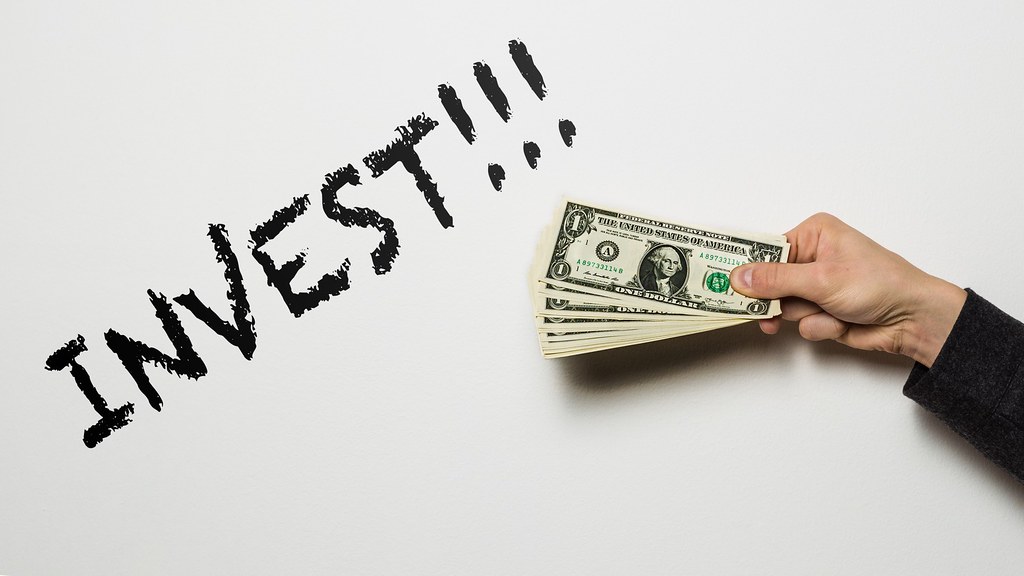
Learn Investing by Doing: The Unrivaled Power of Experiential Learning in the Markets
The world of investing often appears daunting, a labyrinth of complex terminology, charts, and seemingly unpredictable market movements. Countless books, online courses, and seminars promise to unlock its secrets, yet for many, the leap from theoretical knowledge to practical application remains a formidable hurdle. While foundational education is undeniably crucial, the most profound and lasting lessons in investing are not learned from textbooks alone, but through the crucible of real-world experience. This is the essence of "learning by doing" – an approach that transforms passive understanding into active, resilient financial wisdom.
The Limitations of Pure Theory: Why Experience is King
Imagine trying to learn how to swim by only reading books about swimming. You might understand the physics of buoyancy, the mechanics of different strokes, and the importance of breathing techniques. But until you actually dive into the water, feel its resistance, and instinctively coordinate your limbs, you haven’t truly learned to swim.
Investing is remarkably similar. Theoretical knowledge provides the map, but experiential learning is the journey itself. Here’s why "doing" is superior to merely knowing:
-
Emotional Intelligence Development: Investing is as much about psychology as it is about economics. Fear, greed, panic, euphoria, impatience – these powerful emotions can derail even the most rational investment plan. You can read all about market bubbles and crashes, but only by experiencing them (even on a small scale) do you truly understand the emotional discipline required to stay the course, avoid panic selling, or resist speculative impulses. Experiential learning builds emotional resilience and self-awareness that no book can convey.
-
Understanding Risk Tolerance in Practice: Everyone has a theoretical risk tolerance. You might confidently declare yourself a "moderate" investor on a questionnaire. But how does that feel when your portfolio drops 20% in a week? Only by seeing real money fluctuate can you genuinely assess your comfort level with volatility and refine your personal risk profile. This practical understanding is invaluable for constructing a portfolio that aligns with your true psychological capacity for risk.
-
Immediate Feedback Loop: When you make an investment decision, the market provides instant, albeit sometimes brutal, feedback. Did that stock pick soar or plummet? Did that asset allocation strategy weather the storm as expected? This immediate feedback loop is a powerful teacher, allowing you to quickly identify what works, what doesn’t, and why. It fosters critical thinking and adaptation in a way that passive learning cannot.
-
Developing "Market Muscle Memory": Just as an athlete develops muscle memory through repeated practice, an investor builds "market muscle memory" by consistently engaging with the markets. This includes placing trades, analyzing news, rebalancing portfolios, and making decisions under pressure. These repeated actions solidify understanding and build intuition, making future decisions more fluid and effective.
-
Overcoming Analysis Paralysis: The sheer volume of investment information can lead to "analysis paralysis," where fear of making the wrong decision prevents any decision at all. Starting small and taking action breaks this cycle. It transforms abstract concepts into tangible actions, demystifying the process and building confidence.
The "How-To" of Learning by Doing: Starting Small and Smart
The idea of "learning by doing" might conjure images of risky, high-stakes gambles. However, the most effective approach is quite the opposite: start small, learn from mistakes, and gradually scale up your involvement as your confidence and knowledge grow.
-
Start with Paper Trading/Simulators (with a caveat): Many brokerage platforms offer paper trading accounts where you can practice buying and selling with virtual money. This is an excellent way to learn the mechanics of trading, understand order types, and test out strategies without financial risk.
- Caveat: While useful for mechanics, paper trading lacks the crucial emotional component. It doesn’t teach you how to react when real money is on the line. Use it as a stepping stone, not the ultimate learning tool.
-
Micro-Investing Apps and Fractional Shares: This is arguably the best entry point for true experiential learning. Apps like Acorns, Stash, or Public allow you to invest small amounts, often by rounding up your everyday purchases or investing as little as $1.
- Fractional Shares: Many brokers now offer fractional shares, meaning you can buy a portion of a high-priced stock (e.g., $100 worth of Amazon stock, even if one share costs $1500). This democratizes access to diversified portfolios even with limited capital.
-
Begin with Low-Cost, Diversified Funds: Instead of picking individual stocks, which can be highly volatile for beginners, start with:
- Index Funds or ETFs (Exchange Traded Funds): These funds track a market index (like the S&P 500) and provide instant diversification across many companies. They are low-cost, passively managed, and historically offer solid returns over the long term. This allows you to experience market movements without the specific risk of a single company.
- Robo-Advisors: Platforms like Betterment or Wealthfront use algorithms to build and manage diversified portfolios based on your risk tolerance. They automate the investment process, making it incredibly easy to start investing real money with minimal effort. This is excellent for learning about asset allocation and portfolio rebalancing without hands-on management.
-
Dollar-Cost Averaging (DCA): Commit to investing a fixed amount of money regularly (e.g., $50 every two weeks, $200 every month). This strategy:
- Removes the need to "time the market" (buying low, selling high).
- Automates your investing habit.
- Ensures you buy more shares when prices are low and fewer when prices are high, averaging out your cost over time. DCA is a powerful way to experience market fluctuations and build wealth steadily.
-
Start with a Small, Manageable Amount: The key is to invest an amount that, if lost, would not significantly impact your financial well-being. This minimizes stress and allows you to focus on the learning process rather than the potential for financial ruin. Think of this initial capital as your "tuition fee" for the most valuable investment education you’ll ever receive.
The Invaluable Lessons Gained from "Doing"
As you embark on this hands-on journey, you’ll uncover lessons that theory alone can never teach:
- The Reality of Volatility: You’ll see your portfolio value go up and down, sometimes dramatically, within hours or days. This teaches you that market fluctuations are normal and often temporary, helping you develop a calmer, long-term perspective.
- The Impact of News: You’ll observe how real-world events – economic reports, geopolitical shifts, company announcements – directly influence market prices, and how markets often react based on anticipation and sentiment, not just pure logic.
- The Power of Compounding: By consistently investing, even small amounts, you’ll witness the magic of compounding as your returns start generating their own returns. This tangible experience is far more motivating than a theoretical chart.
- The Importance of Patience: Investing is a marathon, not a sprint. Experiencing market cycles firsthand reinforces the need for patience and the folly of chasing quick gains.
- Your Own Behavioral Biases: You’ll likely identify your own tendencies towards FOMO (Fear Of Missing Out) during bull runs or panic during downturns. Recognizing these biases is the first step to mitigating their negative impact.
- The Value of Diversification: As different parts of your diversified portfolio perform differently, you’ll understand why not putting all your eggs in one basket is crucial for risk management.
Navigating the Risks: Learning from Mistakes
"Learning by doing" inherently involves making mistakes. The goal isn’t to avoid them, but to learn from them.
- Expect Losses: Not every investment will be a winner. Some will lose money. Frame these losses as tuition. Analyze what went wrong: Was it poor research? Emotional decision-making? An unforeseen market event?
- Don’t Chase Returns: The urge to jump into the latest hot stock or cryptocurrency is powerful. Experiencing a few "FOMO"-driven losses will quickly teach you the discipline of sticking to your strategy and avoiding speculative fads.
- Avoid Over-Leveraging: Never invest with borrowed money, especially when starting out. This magnifies both gains and losses and can lead to financial ruin.
- Continuous Learning: As you gain practical experience, supplement it with ongoing education. Read reputable financial news, listen to podcasts, and deepen your understanding of economic principles. Your "doing" will give context to your "reading."
Conclusion: The Journey to Investment Mastery
The journey to becoming a confident and competent investor is not found solely within the pages of a book or the slides of a presentation. It is forged in the real world, through the act of doing. By starting small, embracing the immediate feedback of the market, and learning from every success and setback, you will cultivate a profound understanding of investing that is both intellectual and emotional.
So, if you’ve been on the sidelines, intimidated by the complexity of the financial world, remember the swimmer. You can read all you want, but true mastery comes from getting your feet wet. Start today, responsibly and with a commitment to learning. Your future self, equipped with the invaluable wisdom gained through experience, will thank you for it.



